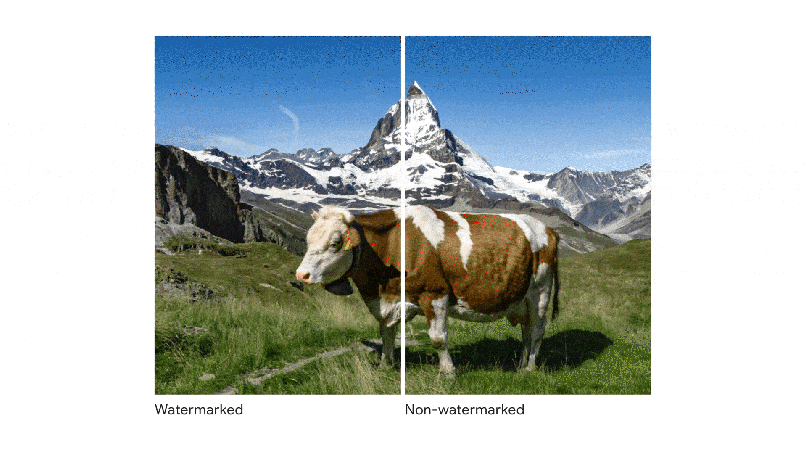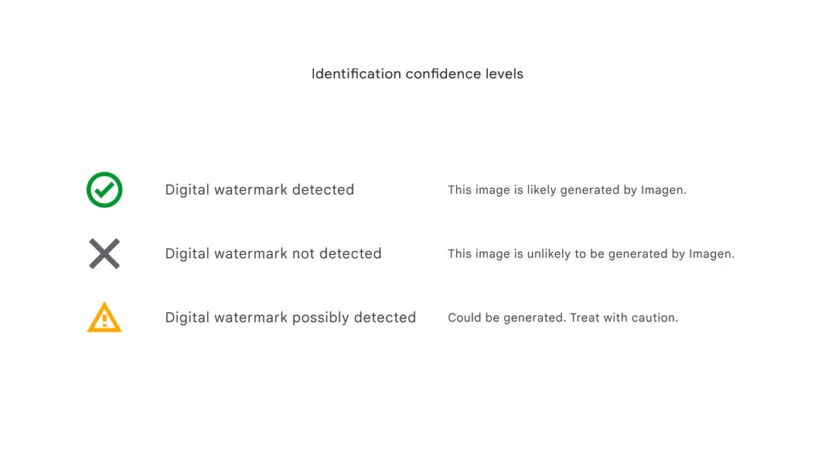
Google creates SynthID tool – embedded watermark against AI-generated images
The Google DeepMind team has created a tool called SynthID, which is designed to mark images generated by artificial intelligence with an indistinguishable watermark.
SynthID will initially be available only to users of Google’s Imagen AI image generator, which is hosted on Google’s Cloud Vertex machine learning platform. When creating an image, users will be given the opportunity to choose whether to add a watermark or not.

This can help fight against dipfakes, which became particularly widespread last year as the popularity of generative artificial intelligence grew, MIT Technology Review reports. Watermarking is a technique that allows you to embed a specific signal into a piece of text or image that will identify it as generated. This will help to protect copyright, among other things.
At Google’s annual I/O conference in May, Sundar Pichai said that the company was building its models with the possibility of integrating watermarks in mind. Google, through DeepMind, became the first major tech company to publicly launch such a tool.
How SynthID works
Traditionally, images have been watermarked by adding a visible symbol to them or by entering information in the metadata. But this method is “fragile,” and the watermark can be lost when images are cropped, resized, or edited, says Pushmeet Kohli, vice president of research at Google DeepMind.
SynthID is created using two neural networks. One of them takes the original image and creates another, almost identical to it, but with slightly altered pixels. This creates a built-in pattern that is invisible to the human eye. The second neural network can detect this pattern and let users know if it detects or suspects a watermark. According to Kohli, SynthID is designed in such a way that the watermark can be detected even if the image is taken from a screenshot or edited.

Google DeepMind is not the only one working on watermarking methods. Similar tools already exist and are used in the open-source AI image generator Stable Diffusion. Meta has also conducted research on watermarking, but has not yet launched any public tool for applying and tracking watermarks.
What’s next?
Coley claims that Google DeepMind watermark is more resistant to forgery than previous attempts at image watermarking, although it is still not completely secure. Nevertheless, the launch of Google DeepMind is a good first step and can lead to better information sharing in the industry about which methods work and which do not, says Claire Leibovich, head of the AI and Media Integrity Program at the Partnership on AI.
Coley said that the watermarking tool is “experimental” and added that the company wants to see how people use it and learn about its strengths and weaknesses before rolling it out more widely. He did not say whether Google DeepMind would make the tool available for images other than those generated by Imagen, or whether Google would add watermarking to its other AI image generation systems.

